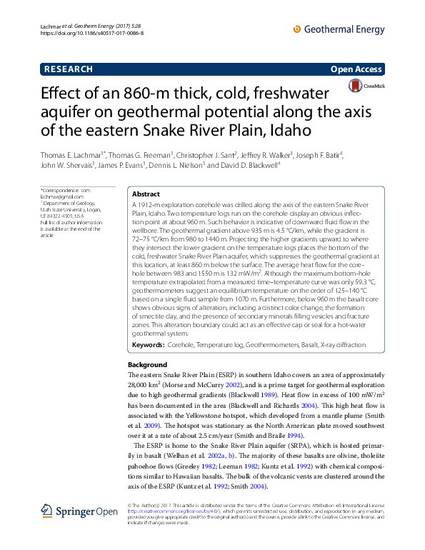
A 1912-m exploration corehole was drilled along the axis of the eastern Snake River Plain, Idaho. Two temperature logs run on the corehole display an obvious inflection point at about 960 m. Such behavior is indicative of downward fluid flow in the wellbore. The geothermal gradient above 935 m is 4.5 °C/km, while the gradient is 72–75 °C/km from 980 to 1440 m. Projecting the higher gradients upward to where they intersect the lower gradient on the temperature logs places the bottom of the cold, freshwater Snake River Plain aquifer, which suppresses the geothermal gradient at this location, at least 860 m below the surface. The average heat flow for the corehole between 983 and 1550 m is 132 mW/m2. Although the maximum bottom-hole temperature extrapolated from a measured time–temperature curve was only 59.3 °C, geothermometers suggest an equilibrium temperature on the order of 125–140 °C based on a single fluid sample from 1070 m. Furthermore, below 960 m the basalt core shows obvious signs of alteration, including a distinct color change, the formation of smectite clay, and the presence of secondary minerals filling vesicles and fracture zones. This alteration boundary could act as an effective cap or seal for a hot-water geothermal system.
Available at: http://works.bepress.com/james_evans/95/
